[social_warfare]
In a world that never ceases to amaze, the boundary between reality and the otherworldly often blurs. Nature parades its collection of the most bewildering creatures you’ve ever laid eyes on. Forget the lions, the tigers, the bears – oh my! Dive with me into the less trodden path, where the weirdest animals hold court, commanding our fascination and sometimes our bewilderment.
From the deep blue seas to the heart of dense forests, our planet is home to creatures that defy logic, inspire tales, and sometimes, let’s be honest, give us the heebie-jeebies. So, join us as we explore the 15 weirdest animals on Earth, a journey for those who think they’ve seen it all. You’re in for a treat!
1. Aye-Aye
In the cloak of Madagascar’s night, the Aye-aye taps away, playing nature’s morse code to find its next meal. This creature could be the protagonist in a gothic novel, with its dark, bushy tail, eerie yellow eyes, and that one elongated finger.
It’s not exactly winning any beauty contests, but it’s a marvel of evolution. The Aye-aye’s method of finding food, tapping on wood to listen for insects moving inside, then gnawing holes to fish them out with its skeletal finger, is a fascinating adaptation.
They might send a shiver down your spine, but these lemurs have a certain misunderstood charm.
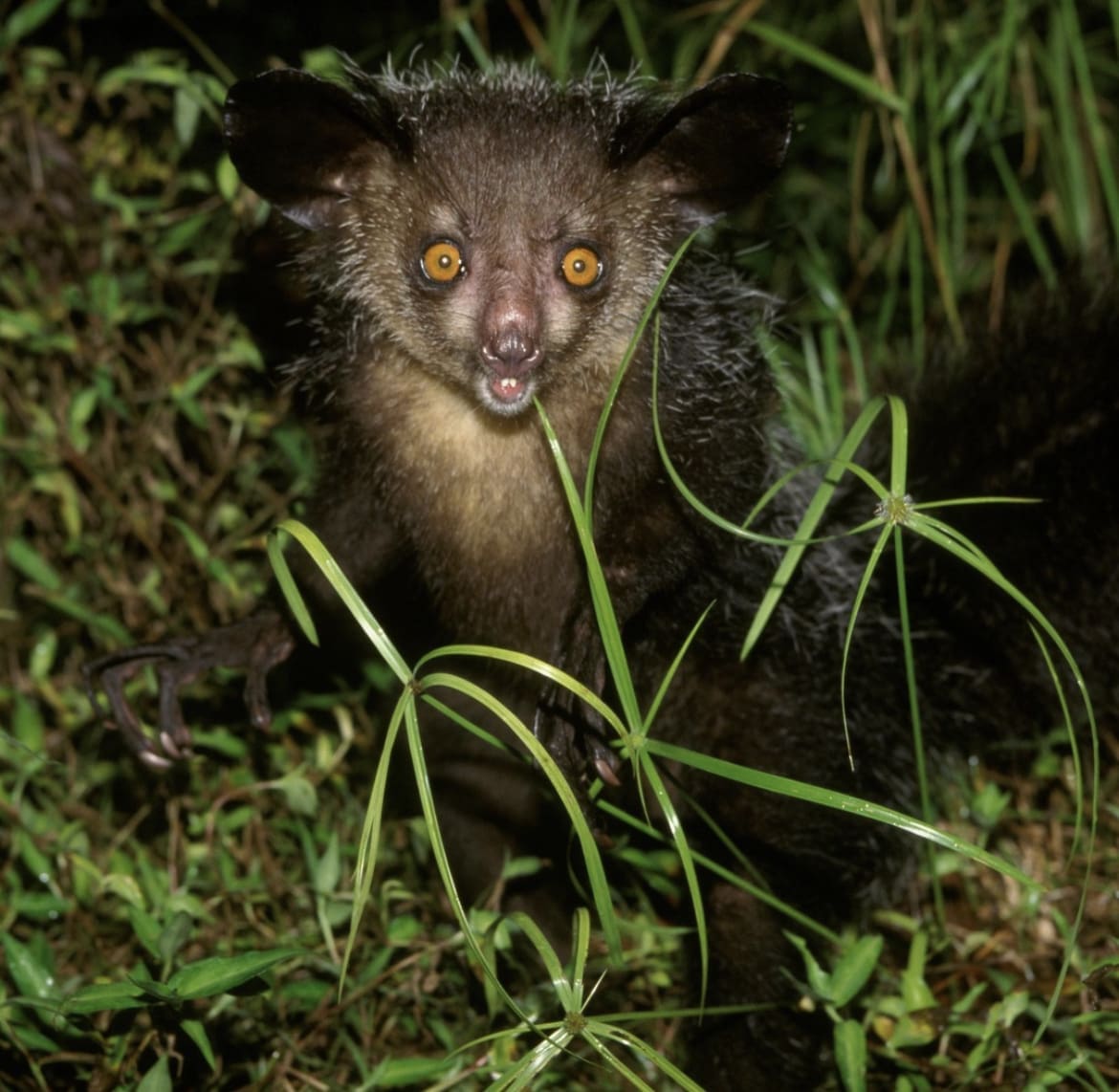
2. Naked Mole-Rat
Who needs a cape when you’ve got superpowers like the Naked Mole-Rat? This creature is a living testament to the saying, “looks can be deceiving.” Residing in the subterranean realms of East Africa, it’s not winning any beauty pageants with its wrinkled pink skin and buck teeth.
Yet, it’s a scientific marvel. Cancer resistance, a pain immunity, and a social structure that rivals that of bees and ants – talk about squad goals!
These bald wonders may not be your first choice for a pet, but they are undoubtedly one of Earth’s most fascinating and weirdest animals.
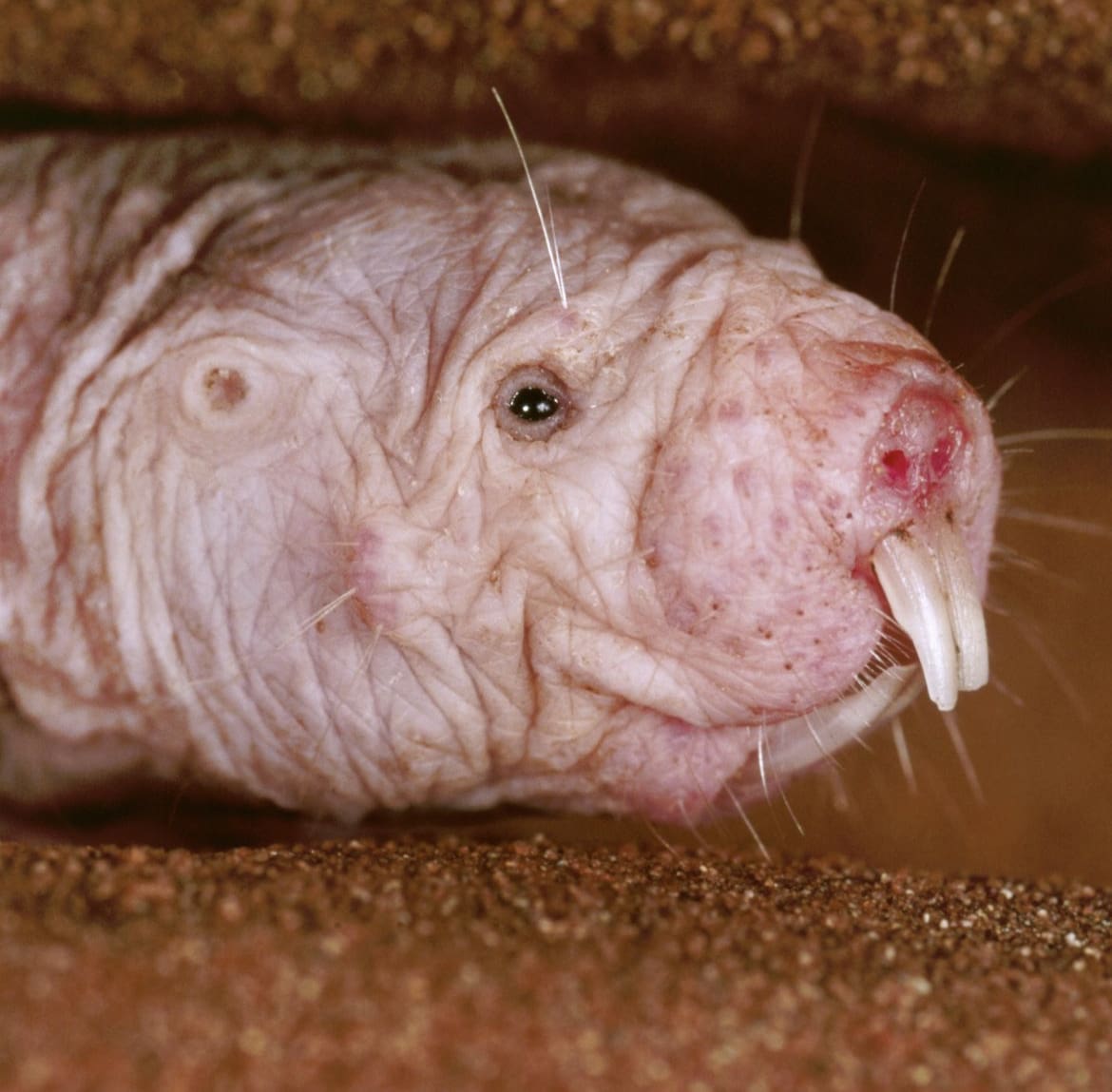
3. Axolotl
Swimming in the mystical waters of Mexico, the Axolotl looks like it wandered out of an enchanted storybook, decided life was pretty cool underwater, and threw away the idea of growing up.
With a forever-young attitude, external gills that look like feathered headdresses, and a face that’s always smiling, the Axolotl is a marvel of nature. Capable of regenerating nearly any part of its body, it’s like Wolverine in cute, aquatic form.
Not only do they defy the aging process, but their ability to regenerate is also providing valuable insights for science, particularly in the fields of medicine and longevity.
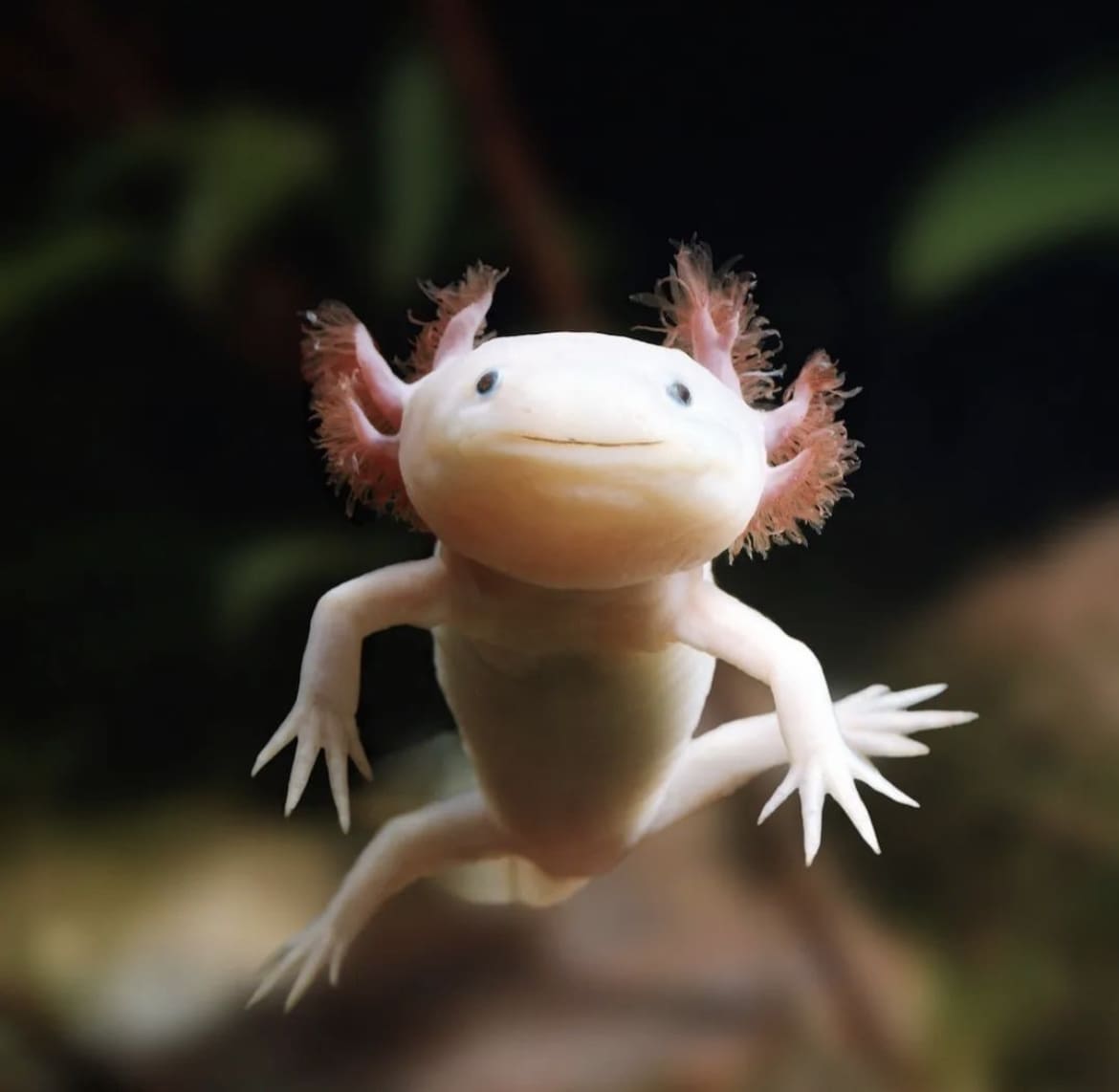
4. Blobfish
Picture this: a gelatinous mass with a droopy face that looks like it’s perpetually on the verge of tears. Welcome to the world of the Blobfish, a creature that wouldn’t look out of place in a cartoon if it wasn’t so bizarrely real.
Found in the deep waters off the coasts of Australia and New Zealand, the Blobfish leads a rather pressure-filled life, literally. Its jelly-like consistency, which is slightly less dense than water, allows it to float above the seafloor without expending energy on swimming.
This might sound like a lazy lifestyle, but at depths where pressures would crush other creatures, the Blobfish’s adaptation is frankly genius.
Its melancholic appearance has earned it the title of the world’s ugliest animal, but in the realm of the weirdest animals, the Blobfish is royalty.

5. Pacu Fish
Venture into the waters of the Amazon, and you might meet a fish with a dental arrangement strikingly similar to your own. The Pacu Fish, often referred to as the ‘nutcracker fish’, boasts a set of teeth eerily reminiscent of human molars.
While their cousin, the piranha, goes for a more razor-sharp approach to dental equipment, Pacus use their human-like teeth to crack open nuts and seeds that fall into the rivers and streams of the Amazon.
But don’t let their friendly smile fool you; these fish can grow quite large, making them one of the most unusual and weirdest animals lurking in freshwater. The sight of their dental arrangement might just have you reconsidering your next swim in the Amazon.

6. Saiga Antelope
The Saiga Antelope looks like it sprung out of an Ice Age animation, with its oversized, bulbous nose dominating its face. This odd nasal arrangement isn’t for show; it serves as a natural air conditioning system, filtering out dust in the summer and warming cold air in the winter.
Native to the Eurasian steppes, the Saiga has been around since the Pleistocene, dodging extinction with its bizarre but effective adaptations. However, despite their resilience and peculiar charm, Saigas are facing a real threat from poaching and habitat loss.
Their unique appearance and survival story make them a fascinating study in the resilience of life and a worthy addition to our list.
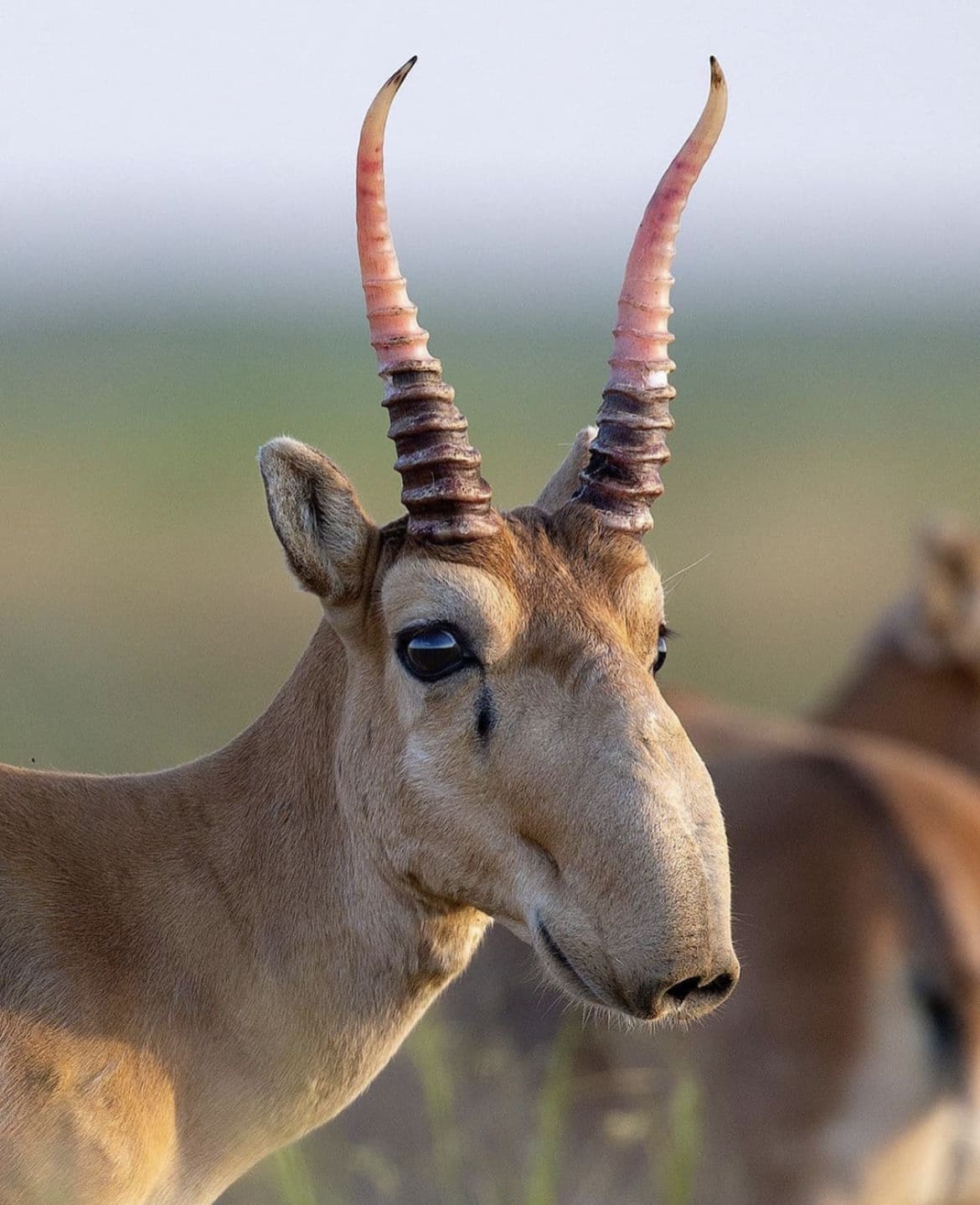
7. Goblin Shark
Diving into the depths of the ocean brings us face-to-jaw with the Goblin Shark, a creature that seems to have swum straight out of a prehistoric era. Known as a “living fossil,” this shark’s lineage dates back around 125 million years, making it a window into the deep past.
Its most striking feature, aside from its lovecraftian appearance, is its jaw mechanism.
When it’s time to feed, the Goblin Shark projects its jaw forward with a speed and grace that contradicts its otherwise eerie demeanor, snatching up prey in an instant. Its pinkish skin, which appears otherworldly in the dim light of its deep-sea habitat, adds to its ghostly allure.
Among the weirdest animals, the Goblin Shark holds a special place for its blend of the ancient and the bizarre.

8. Tardigrades (Water Bears)
Tiny yet mighty, Tardigrades, affectionately known as Water Bears, are microscopic animals that could teach a masterclass in survival.
These minuscule marvels, visible only under a microscope, have been found in the most extreme environments on Earth—from the deepest oceans to the highest mountains and even the vacuum of space.
Their ability to enter a cryptobiotic state, effectively pausing their metabolism, allows them to withstand extreme temperatures, radiation, and even the absence of water for decades.
With their chubby, bear-like appearance and eight legs, Tardigrades are among the world’s most resilient creatures, embodying the incredible adaptability of life.
Tardigrades (Water Bears): The Indestructible Microbeasts
9. Dumbo Octopus
Floating through the ocean’s midnight zone, the Dumbo Octopus earns its name from its ear-like fins, reminiscent of Disney’s famous flying elephant. These gelatinous creatures navigate the abyss with a grace that’s as enchanting as their appearance.
Unlike their more famous octopus cousins, Dumbos are found at extreme depths, where the pressure would crush other sea life. Their diet consists of crustaceans and bivalves, which they snatch up with their tentacles in a gentle, ghost-like manner.
With their soft, umbrella-shaped bodies and ability to hover off the seafloor, Dumbo Octopuses capture the imagination. Their serene demeanor and deep-sea habitat remind us of the wonders that lie hidden in the darkest corners of our planet.
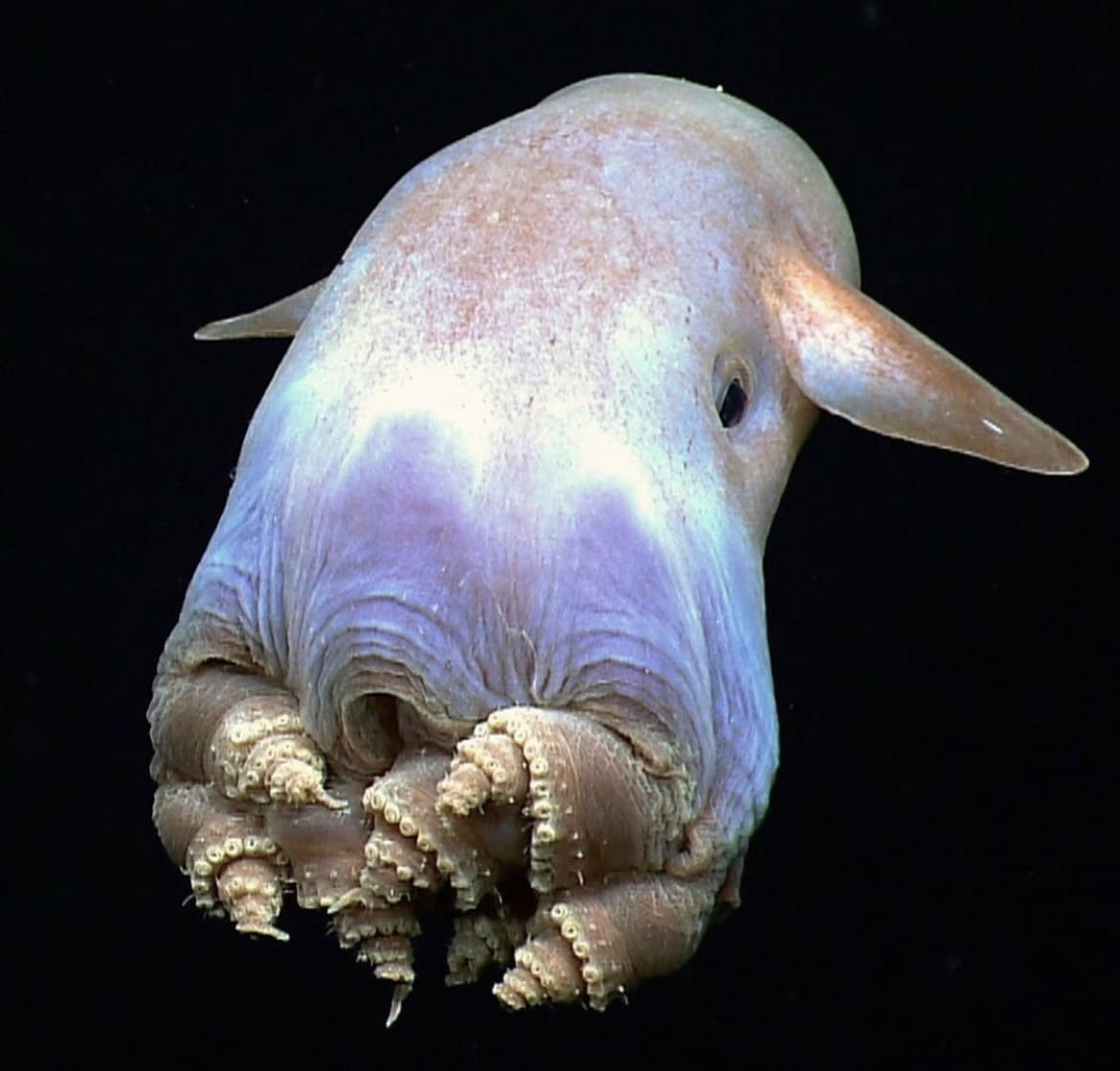
10. Pink Fairy Armadillo
The Pink Fairy Armadillo looks like it wandered out of a fantasy novel, complete with a shield-like carapace and a delicate pink hue that contrasts strikingly against the earth it burrows through.
The smallest of the armadillo clan, this nocturnal creature calls the dry grasslands and sandy plains of central Argentina its home. Its fairy-tale name belies a tough life spent digging endless tunnels in search of ants and larvae. The armadillo’s shovel-shaped claws make it a master excavator, capable of vanishing underground within seconds when threatened.
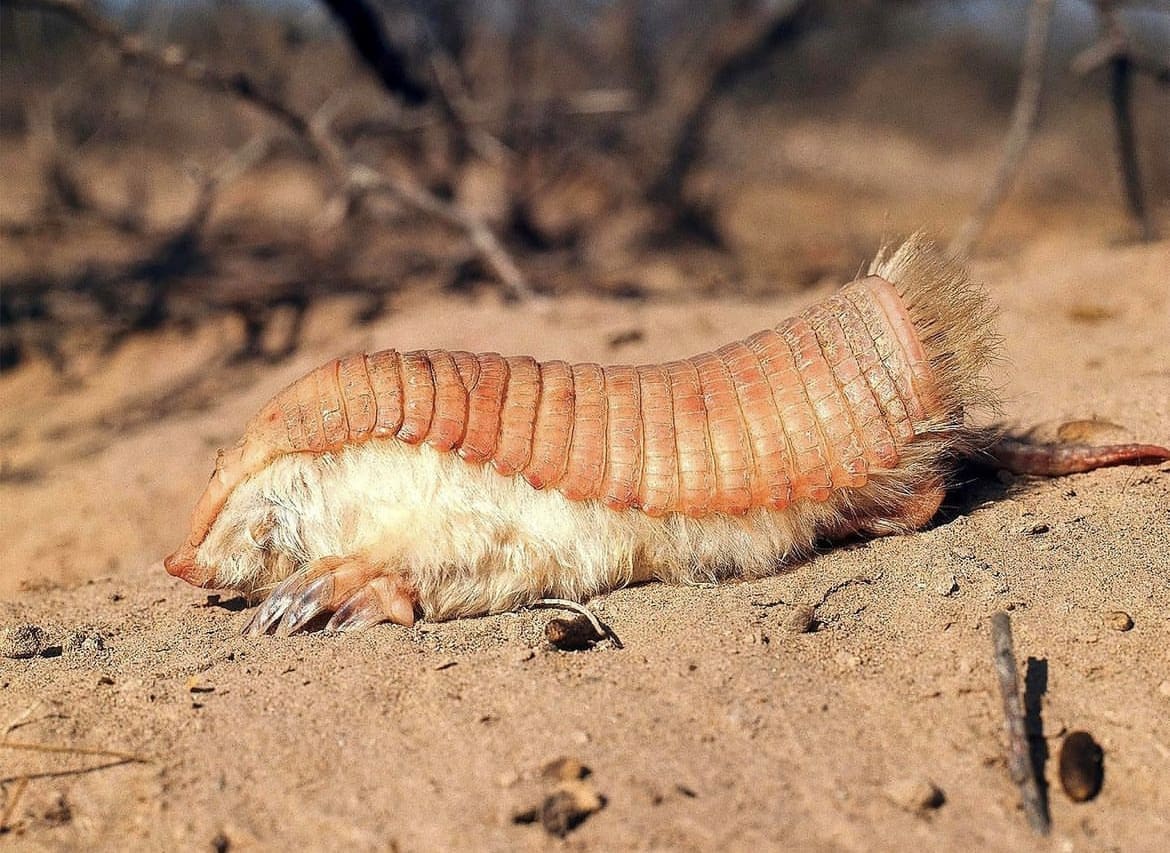
11. Sunda Colugo (Flying Lemur)
Not quite a lemur and certainly not capable of powered flight, the Sunda Colugo defies easy categorization.
This enigmatic creature, found in the dense forests of Southeast Asia, glides between trees using a large membrane that stretches from its neck to the tips of its fingers and toes, all the way to its tail. This adaptation allows it to soar for up to 70 meters (230 feet) – a remarkable feat for a mammal.
The Sunda Colugo spends most of its life in the trees, feeding on soft plant parts in the quiet of the night. Its cryptic lifestyle and peculiar mode of locomotion showcase the incredible diversity of evolutionary solutions to the challenges of survival.
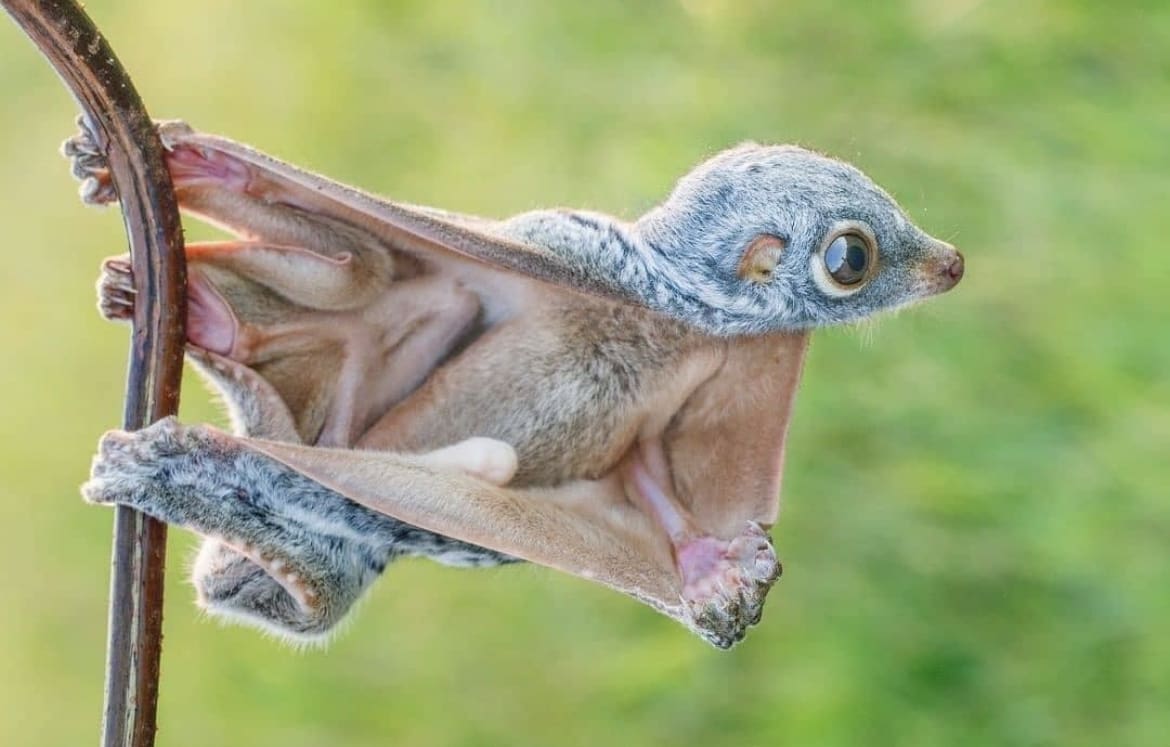
12. Thorny Devil
Australia’s outback harbors many strange creatures, but few are as bizarre or as aptly named as the Thorny Devil.
This small lizard is covered in an armor of spiky scales, presenting a formidable defense against predators. Its coloration, a mottled pattern of desert browns, reds, and tans, provides perfect camouflage against the arid landscape. The Thorny Devil’s most remarkable feature might be its method of hydration: it can collect water from any part of its body through capillary action, channeling it to its mouth.
This adaptation is crucial for surviving in one of the harshest environments on Earth. The Thorny Devil is a testament to the weirdest animals’ resilience and ingenuity, thriving in conditions that would spell doom for most.
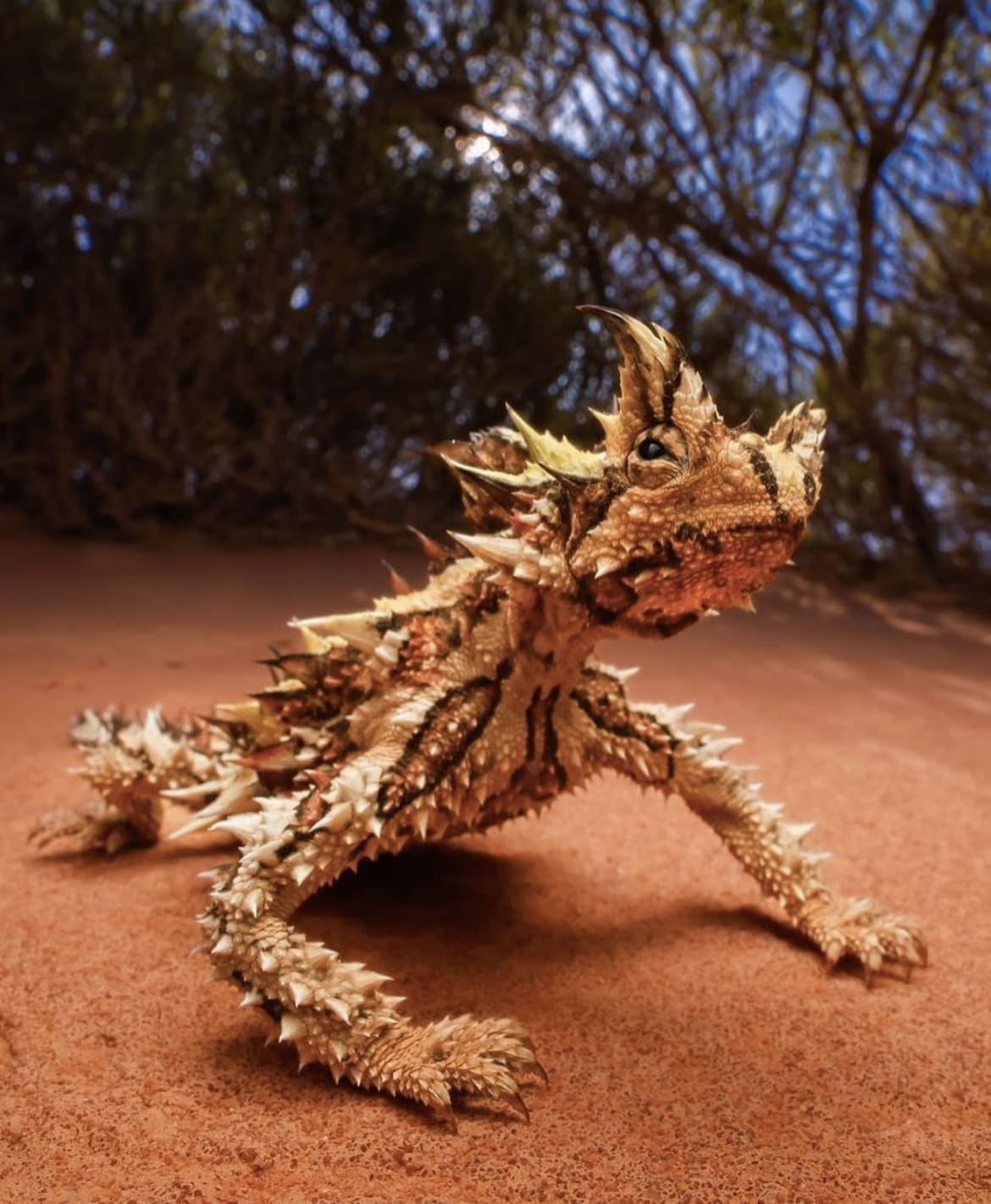
13. Proboscis Monkey
The Proboscis Monkey, with its distinctive long, droopy nose, looks like a character straight out of a quirky animated film. This odd feature, found prominently in males, serves as a status symbol among their kind and is believed to amplify their calls, attracting mates and asserting dominance.
Native to the mangrove forests and swamps of Borneo, these monkeys are also excellent swimmers, with webbed feet that aid in their aquatic lifestyle.
The Proboscis Monkey reminds us that in the animal kingdom, sometimes the strangest features serve the most important purposes.
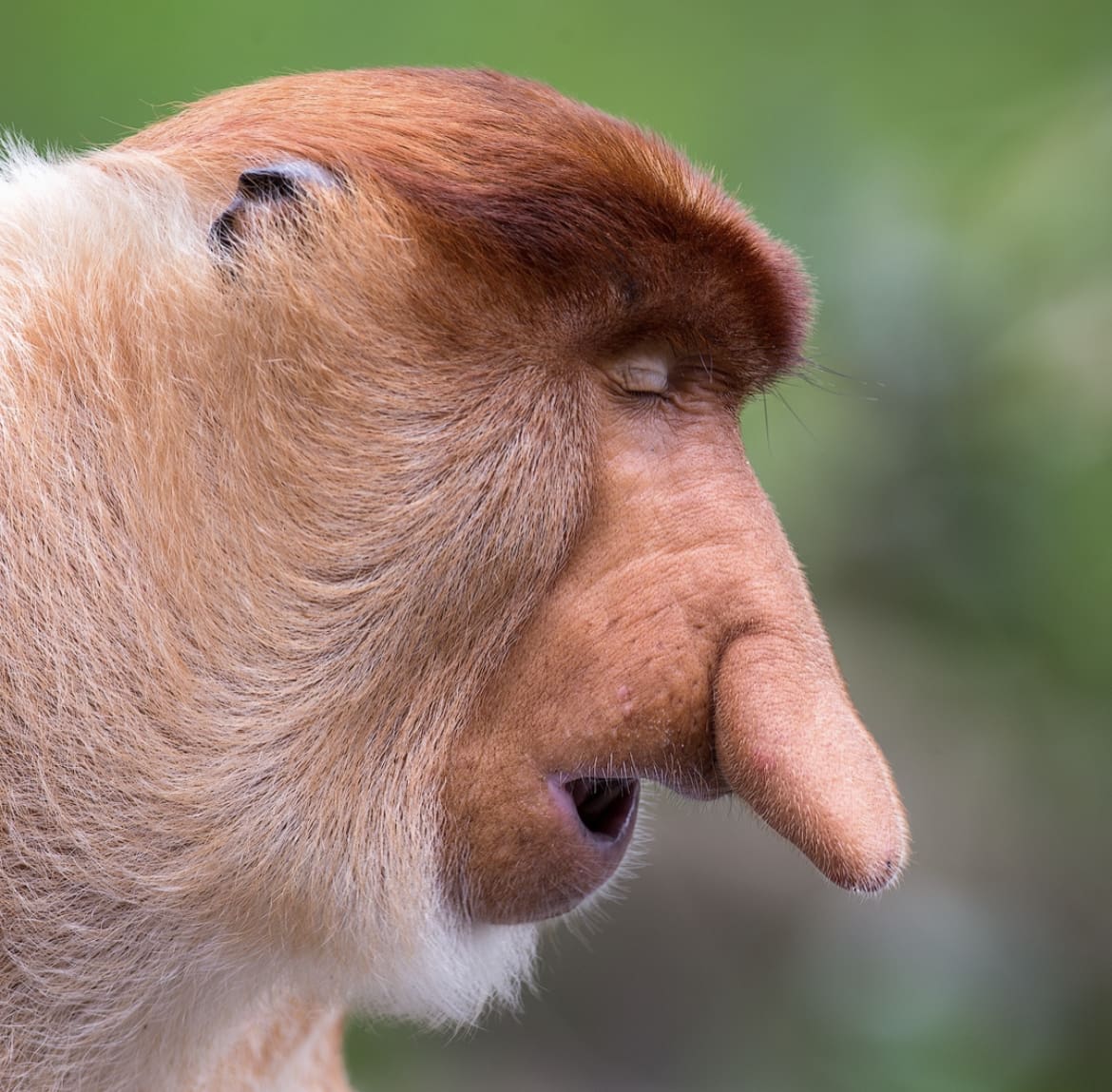
14. Komondor Dog
At first glance, the Komondor might not seem like one of the planet’s weirdest animals—after all, it’s a dog.
But give it a second look, and you’ll see why it earns its spot. This Hungarian breed sports a unique, corded coat that looks like a collection of mop heads, designed to protect it from harsh weather and attacks by predators while herding livestock.
The Komondor’s dreadlocks are not just for show; they are a natural and functional adaptation that has been cultivated through selective breeding.
This breed is a testament to the variety of domesticated animal life, showcasing how human needs and animal evolution can intertwine in fascinating ways.
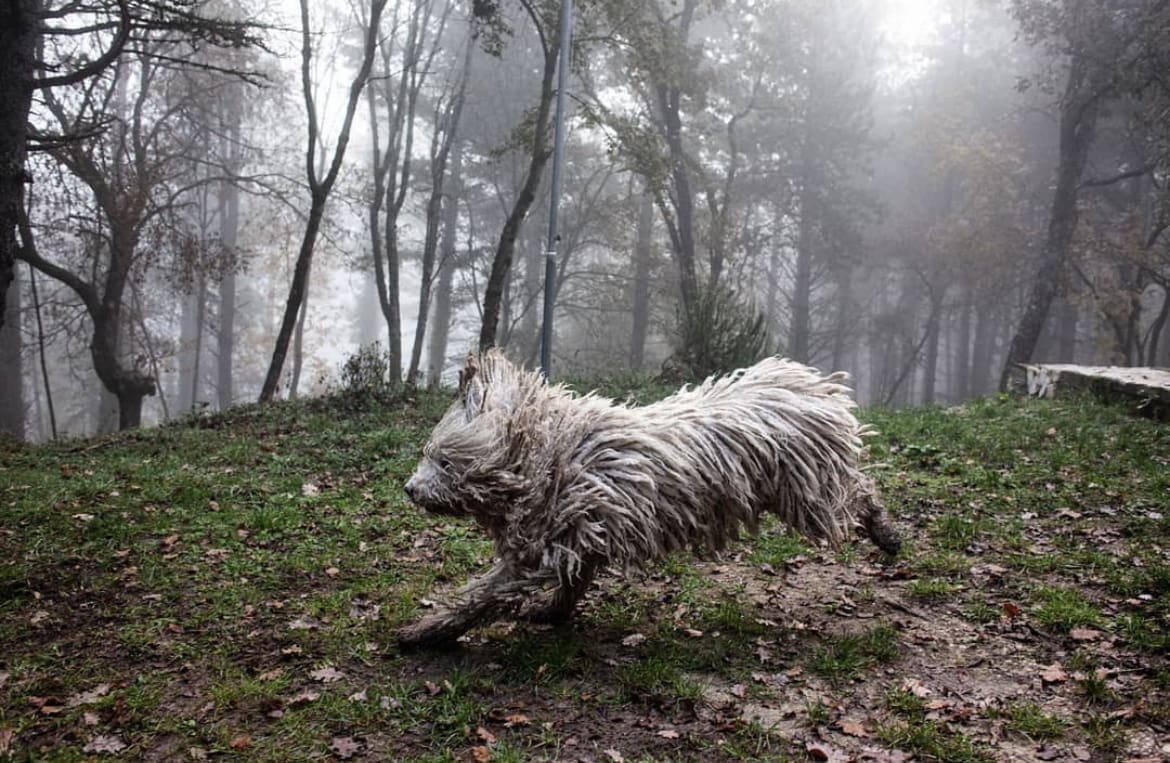
15. Vampire Squid: The Gentle Goth
The Vampire Squid, with a name that conjures images of underwater horror, is surprisingly less menacing than its moniker suggests.
Dwelling in the oxygen-minimal depths of tropical oceans, this cephalopod is equipped with bioluminescent organs that can dazzle predators and prey alike. Unlike its more aggressive squid relatives, the Vampire Squid uses a cloak of webbing between its tentacles to envelop itself, creating an eerie appearance when threatened.
Its diet consists mainly of detritus, making it a scavenger rather than a predator. The Vampire Squid’s unique adaptations to deep-sea life, combined with its gothic allure, reveal the diverse strategies life uses to thrive in the planet’s most inhospitable environments.

